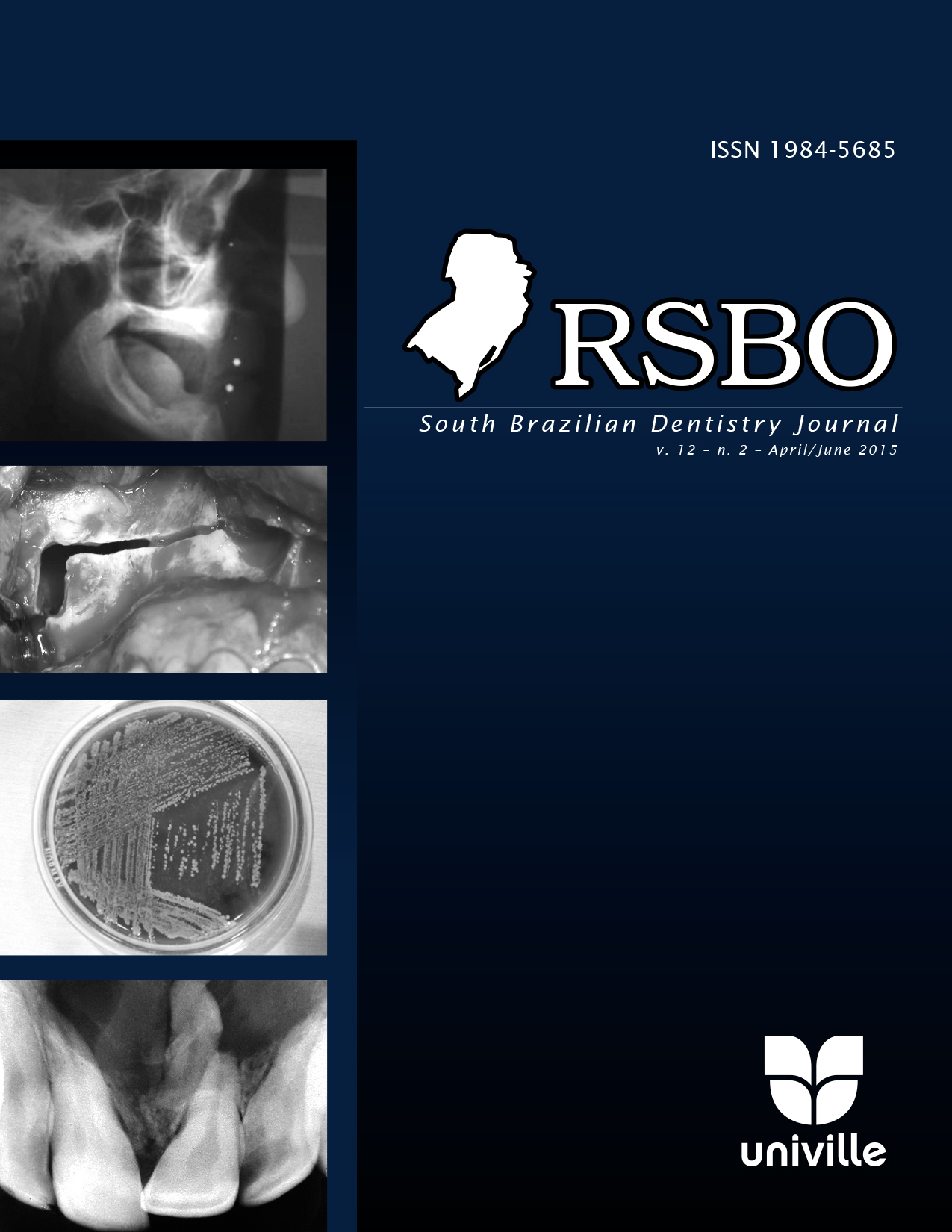Investigation of medicines with potential xerostomic effect used in institutionalized elderly
DOI:
https://doi.org/10.21726/rsbo.v12i2.749Palavras-chave:
health of institutionalized elderly; dry mouth; medicine package inserts.Resumo
Several factors affect the salivary flow and cause
xerostomia, i.e. aging, diets, radiation, various pathologies and
the use of drugs. Objective: This study aimed to investigate drugs
with potential xerostomic effect in institutionalized elderly patients.
Material and methods: 235 elderly were investigated, of both sexes,
of which 123 were women (52.3%) and 112 (47.7%) were men. In
addition to the gender and age, the use of medications containing
side effects of xerostomia/dry mouth/ hyposalivation or hyposialia was
investigated. Such drugs were separated according to their medical
area of expertise: Cardiology, Gastroenterology, Allergy, Neurology
and pulmonology Results: When investigated the amount of drugs
used for female patients, it was observed that 83 (67.5%) used up to
five drugs, 35 (28.4%) between 6 and 10 and medicines, and 5 (4.1%)
more than 10 drugs. When analyzed the amount of drugs used for
male patients, it was observed that 88(78.6%) used up to five drugs,
17 (15.2%) were between 6 and 10 7 medicines, and (6.2%) more than
10 drugs. By analyzing the drugs with xerostomic potential, we found
354 medicines. Among these, 181 (51.1%) were used in Neurology,
45 (12.7%) had been prescribed in Cardiology, 33 (9.2%) were used drugs
for allergic conditions, 80 (22.3%) were prescribed in gastroenterology
and 15 (4.3%) in pulmonology. Conclusion: It can be concluded that
many medications used to treat institutionalized elderly had xerostomic
potential effect, notably those used in Neurology. Polypharmacy is also
present, especially in the older age group.

